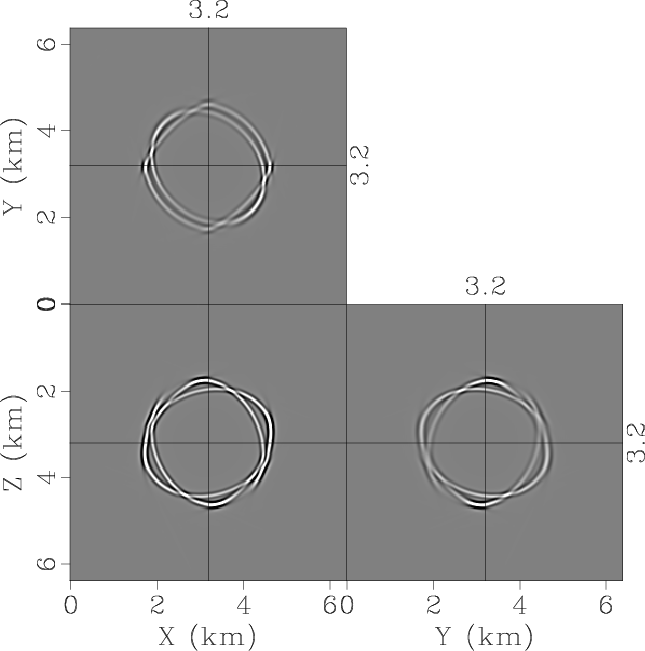A new paper is added to the collection of reproducible documents: Lowrank one-step wave extrapolation for reverse-time migration

Reverse-time migration (RTM) relies on accurate wave extrapolation engines to image complex subsurface structures. To construct such operators with high efficiency and numerical stability, we propose an approach of one-step wave extrapolation using complex-valued lowrank decomposition to approximate the mixed-domain space-wavenumber wave extrapolation symbol. The lowrank one-step method involves a complex-valued phase function, which is more flexible than a real-valued phase function of two-step schemes, and thus is capable of modeling a wider variety of dispersion relations. Two novel designs of the phase function lead to desired properties in wave extrapolation. First, for wave propagation in inhomogeneous media, we include a velocity gradient term to implement a more accurate phase behavior, particularly when velocity variations are large. Second, we develop an absorbing boundary condition, which is propagation-direction-dependent and can be incorporated into the phase function as an anisotropic attenuation term. This term allows waves to travel parallel to the boundary without absorption, thus reducing artificial reflections at wide-incident angles. Using numerical experiments, we demonstrate the stability improvement of a one-step scheme in comparison with two-step schemes. We observe the lowrank one-step operator to be remarkably stable and capable of propagating waves using large time step sizes, even beyond the Nyquist limit. The stability property can help minimize the computational cost of seismic modeling or reverse-time migration. We also demonstrate that lowrank one-step wave extrapolation handles anisotropic wave propagation accurately and efficiently. When applied to RTM in anisotropic media, the proposed method generates high quality images.
codemore code
~~~~